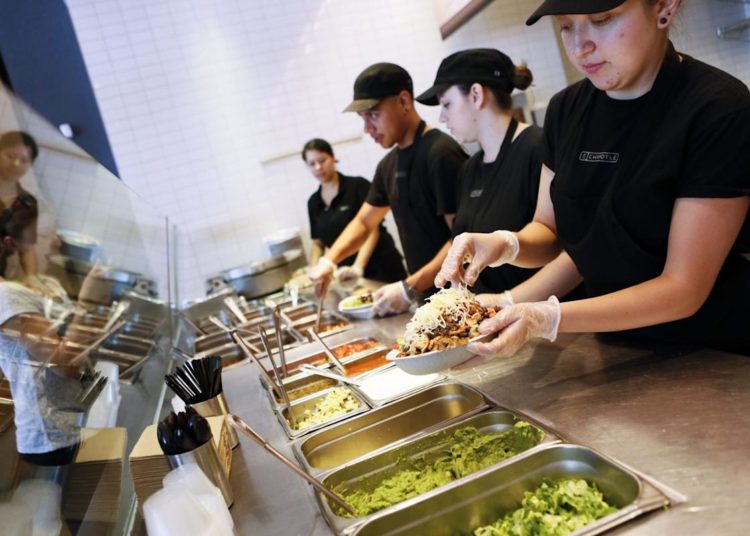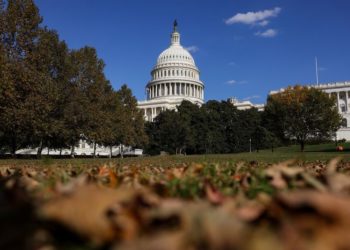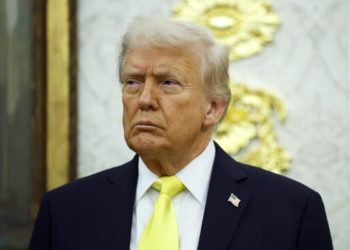NEED TO KNOW
-
Suge Knight interviewed with PEOPLE from prison to discuss the 1996 murder of Tupac Shakur, claiming his mother assisted him in his death and friends smoked his cremated ashes
-
Duane “Keefe D” Davis has been charged with Shakur’s murder and pleaded not guilty
-
Court filings include past police interviews in which Davis claimed Sean “Diddy” Combs was involved in ordering the hit on Shakur and rap mogul Suge Knight. Combs has long denied any involvement in the shooting and Las Vegas police say he “has never been considered a suspect”
Nearly three decades ago, around 11 p.m. on September 7, 1996, Marion “Suge” Knight — then the 31-year-old CEO of Death Row Records and one of the most feared kingpins in the music business — drove a black BMW 750 sedan east through Las Vegas, a block off the strip.
In the passenger seat sat rapper Tupac Shakur aka 2Pac, just 25, whose cultural footprint had already eclipsed his multi-platinum catalog. Dressed in a Versace shirt and gleaming gold chain, Shakur was still out on bond, still basking in the glow of stardom, brushing off a violent altercation with a Crip gang member inside a Sin City casino that had transpired just hours earlier after a Mike Tyson boxing match.
Trailing behind Knight and Shakur was the Death Row convoy of about ten cars that snaked through traffic like shadows. Then, at the corner of Flamingo and Koval, beneath the buzz of the Strip’s neon haze, a white, late-model Cadillac pulled up alongside.
According to Las Vegas prosecutors’ July 2024 filings, South Side Compton Crips member Orlando “Baby Lane” Anderson didn’t have the correct angle to shoot. This came after a separate court filing in December described him as the alleged shooter.
Anderson allegedly handed the semiautomatic .40 Glock to fellow gang member Deandre “Big Dre” Smith, who opened fire from the backseat of the vehicle — 13 shots in total. Four bullets struck Shakur in the chest, arm and thigh. Knight was grazed in the head by shrapnel but survived. Shakur, who had worn a bulletproof vest regularly, was not wearing one that night.
Inside the BMW, Tupac’s unreleased 1997 track “Never Had a Friend Like Me” was playing, Knight recalls. Speaking from California’s Richard J. Donovan Correctional Facility, where he is serving 28 years for a fatal hit-and-run, Knight, now, 60, reflected on the moment that altered everything as the only living witness to the deadly shooting.
“Tupac is my favorite person in the world. It was a part of me that changed my life forever,” he says, voice quivering. “He didn’t have to die. A part of me died when he died.”
For nearly 30 years, no one was held accountable for Shakur’s murder. The shooting occurred on one of the most surveilled intersections in America, amid surging tensions between rival gang-affiliated record labels. Many have pointed to a deeper reason the case went cold: an unwillingness to cross lines of influence, power and fear that ran far beyond music.
But in September 2023, the tides finally turned. Duane “Keefe D” Davis — a former Crips leader and the last known living suspect from the infamous white Cadillac that night — was arrested and charged with orchestrating the hit. Prosecutors allege Davis played point man in the murder that’s haunted hip-hop for decades.
Inside the Murder Allegations — and Diddy’s Alleged Role
Months later, in a bombshell court filing dated July 18, 2024, the Clark County District Attorney’s office revealed a long-buried 2009 police interview in which Davis, speaking as a former confidential informant for two years, not only allegedly detailed his own role in the killing — but repeatedly pointed the finger at music mogul Sean “Diddy” Combs, then known as Puffy, as the man who allegedly ordered Tupac Shakur’s assassination.
Davis accused Combs of being enraged by Tupac’s relentless taunts.
The DEA and U.S. Department of Justice also released a report about a 2008 interview in which Davis claimed Combs said he “needed to get rid of Knight and Shakur” and offered Davis $1 million to “handle the problem.”
Knight, still grappling with it all, doesn’t mince words: “I end up with a bullet an inch into my skull, but at the same time, everybody knows where a million dollars came from,” he says, pausing momentarily. “Like what would Pac want? What he really want is truth. I believe that if something smells like sh–, look like sh–, it’s sh–.”
Combs has long vehemently denied any role in the shooting, and a public information officer for the Las Vegas Metropolitan Police Department told PEOPLE on July 24, 2024. “Sean Combs has never been considered a suspect in the Tupac Shakur homicide investigation.” He has never been charged in connection to the murder. Combs is currently facing serious unrelated federal charges, including sex trafficking, racketeering and transportation to engage in prostitution. His fate will be decided by twelve jurors in the coming weeks in the Southern District of New York.
Related: Sean ‘Diddy’ Combs Is Not Testifying at His Sex-Trafficking Trial (Exclusive)
Davis, who pleaded not guilty to first-degree murder, remains in custody awaiting trial, which is now delayed until February 9, 2026. His defense claims new witness testimony could place him outside of Vegas and 300 miles away in Los Angeles during the time of the incident. But prosecutors continue to cite his own confessions, most notably his 2019 memoir Compton Street Legend.
Knight’s Final Hours with Tupac
Back in ‘96 in Vegas, after shots were fired, Knight — bleeding from his scalp — made a frantic U-turn and headed west at a high speed toward Las Vegas Boulevard. Meanwhile, two patrol officers on an unrelated call nearby had heard the gunfire and called for backup. They chased down the BMW, which had two blown tires. Once stopped, officers called for medical assistance.
“I got out and tried to tell the officers what happened while I was bleeding everywhere,” says Knight. “Also, I then was getting Tupac out the car, even when the door was open. I had to go over there bleeding everywhere, take the seat belt off him. When we get into the ambulance, Pac is funny as f—. He cracking jokes. I’m cracking jokes. Pac’s like, ‘Sh–, when we heal up, you know what we doing.’ That type of sh–.” The ambulance transported them to the University Medical Center of Southern Nevada.
At the hospital, Knight was treated for minor injuries and released while Shakur was listed in critical condition. “When I came to see him, Pac was sitting up talking. He [allegedly] said, ‘Well, look. One, bring me a blunt. Matter of fact, bring me two blunts.’ And I said, ‘You going to smoke in the hospital?’ He [allegedly] said, ‘Yeah, I am.’”
Knight chuckles softly recalling that moment — Tupac joking, allegedly requesting Hennessy too. Knight says Shakur grabbed him closer, as Knight kissed him on his forehead, and the two said, “I love you” to each other. But that joy cracked under the weight of what came next.
Before the second of two emergency surgeries, including one to remove Shakur’s right lung to stop internal bleeding, he made a chilling request. As he lay in his hospital bed, fading in and out of consciousness, Knight claims Shakur allegedly turned to him, desperately begging to be killed. He spoke with eerie clarity, suggesting they could even capture it on camera, that he’d record a will or even lay down a song explaining everything. It wouldn’t matter, Shakur said. The world would still make Knight pay the ultimate price for it.
Knight recalls them both laughing, but beneath the nervous laughter was a hard truth: Shakur believed he was going to be sent back to prison once the chaos subsided, a payback for the brutal casino beatdown caught on security footage hours before the brutal shooting.
Prison, to Tupac, wasn’t just a fear — it was a fate he believed was worse than death. “I’ll die before I go back,” he allegedly told those around him. Still, suicide was off the table. According to Knight, he believed taking his own life would bar him from heaven, a line he wouldn’t cross. So instead, he turned to his crew — and then to Knight. “Kill me. Shoot me,” he urged. Knight says he refused. “No, Pac. We can’t do it.”
In the haze of hospital lights, beeping monitors and heartbreak, Knight claims Shakur made a final, desperate request to his mother, Afeni: let him go.
According to Knight, who was by the rapper’s side as he lay wracked with pain and failing fast, Shakur pleaded with his mother to help him end his life. Knight claims she allegedly gave him pills in an attempt to honor his wishes.
“The doctors came in and brought him back,” Knight recalls. “And his mom [allegedly] said, ‘Don’t ever do that again. If he’s having complications, don’t touch him. Don’t bring him back. Let him go.’” It was a mother’s raw act of mercy, Knight says — a final promise to her son to respect his suffering.
Doctors, trying to relieve pressure on his battered body, reportedly placed Shakur in a medically-induced coma and hooked him to a respirator, according to Knight. But the damage was irreversible. On September 13, at 4:03 p.m., Shakur was pronounced dead.
What followed, Knight claims, was as surreal and raw as Tupac himself. Immediately after his death, Knight says Afeni, who died at age 60 in May 2016, turned to him and insisted her son be cremated, right then and there. “She came up to me and said, ‘Get it done. Now,’” Knight remembers.
“I told her, ‘Look, I don’t know if I can do that.’” He said he hesitated not out of defiance, but because Shakur, just weeks earlier, had allegedly laid out a different vision for his send-off. They had talked about it in the studio. “He told me, ‘When I go, I want every rapper at my funeral to grab the mic. I want them to kiss me head to toe. Just like in ‘Life Goes On.’” Knight pauses. “He didn’t want to be cremated.”
Related: Tupac Shakur’s Mother Afeni Shakur Davis Dies at 69: Police
But Afeni wouldn’t hear it. “She gave me one of those mama looks, like, ‘Shut your a– up and do what I said.’ Then she started cussing me out. ‘Get this sh– done!’” Knight says. He did what she asked. “I paid someone a million dollars cash to take care of it.”
Later that night, a circle of Shakur’s closest friends gathered to honor him the way they believed he would’ve wanted. The bag containing Tupac’s cremated ashes was passed around. Some, allegedly, were rolled into a blunt and smoked.
“I was so happy to say I was on probation — I couldn’t smoke,” Knight says. “I told his mother, ‘Moms, I’d love to, but if I hit that, I’ll get in trouble.’” He laughs. “I was probably the only one who didn’t hit him.”
Tupac: Convicted Felon, Street Prophet
Shakur came into the world already bearing the weight of revolution. His lyrics dripped with pain, purpose and paranoia — songs about “thug life,” desperation and street justice that read like dispatches from the front lines of America’s forgotten neighborhoods. But for all his fire and charisma, Shakur was, at his core, a troubled and sensitive soul. He spent his early years ricocheting through one inner-city zip code after another, chasing stability that never came.
By the time the spotlight found him, Tupac had already become a walking contradiction: platinum-selling poet, convicted felon, street prophet, media pariah. Shakur’s fourth album, All Eyez on Me, was climbing the charts again and had sold nearly 3 million copies, while his previous release, 1995’s Me Against the World, sold 2 million copies.
He appeared in three movies: Juice (1992), Poetic Justice (1993) and Above the Rim (1994) and just wrapped two 1997 films—Gridlock’d and Gang Related, in which he played a detective. Since ’91, he’d been arrested eight times. He served eight months in prison for a sexual abuse conviction in 1994 and was named in two wrongful-death lawsuits — one involving a 6-year-old boy caught in the crossfire between Shakur’s crew and rivals in Northern California in Marin City in 1992. It was settled for an undisclosed amount in November 1995.
Still, nothing could match the chaos that followed his death.
Rumors ignited within hours: who pulled the trigger, who ordered the hit, who knew more than they were saying. In a 179-page court filing submitted in 2024, prosecutors finally unpacked years of whispers and street talk in granular detail, laying out an explosive account of what allegedly happened before, during and after that fateful night in Las Vegas.
The evening had started with spectacle: Mike Tyson knocked out Bruce Seldon at a boxing title match at the MGM Grand, where Knight and his Mob Piru Blood affiliates were in attendance. After the fight, the entourage ran into Orlando Anderson, an alleged South Side Crip connected to Bad Boy Records, then headed by Sean “Diddy” Combs. It wasn’t a random encounter. The crew recognized Anderson from a previous scuffle where he allegedly tried to steal a Death Row necklace off Trevon “Tre” Lane.
According to a 2009 police interview with Davis, the response was immediate and violent. Shakur, Knight, and Lane swarmed Anderson, throwing fists and kicks, dislocating his shoulder in the process. Security broke it up. By 8:55 p.m., the Death Row crew had left the building. But police haven’t determined if Anderson or Smith allegedly pulled the trigger.
The orders, prosecutors allege, came from Davis himself.
According to grand jury testimony cited in the filing, Davis allegedly said he “commanded” his soldiers (Anderson, Smith and driver Terry Brown) to “confront Knight and Shakur and hunt them down.” Davis, who was riding in the passenger seat at the time of the shooting allegedly said he gave his gang members the “ultimate green light to do something to their a—-.”
Davis added, according to the filing: “Tupac chose the wrong game to play and the wrong n—-s to play with.”
In the 2009 police interview, Davis said he obtained the firearm from drug trafficking associate Eric “Zip” Martin.
Homicide detective Dan Long asked Davis, “Um, Puffy Combs. Does he play a role in this thing?”
“Yeah, I think he did,” Davis responded. “That’s what we think. That’s word on the street.”
He claimed that Diddy was terrified of Knight, and once, in front of a crowd of about 45 men, Combs allegedly said, “Man, ah, I would give anything for that dude[‘s] head,” referring to Knight. According to Davis, “He was real scared of the guy,” he continued. “He said that s— in front of everybody.”
“Was [Combs] implying that he would pay to have it done?” Davis’ attorney asked.
“Yeah, yeah,” Davis responded. “He said it.”
This wasn’t the first time Combs and Knight had been at odds. At the 1995 Source Awards in New York City, Knight took a direct shot from the stage to diss Diddy without calling him out by name: “Any artist out there that want to be an artist and stay a star, and don’t have to worry about the executive producer trying to be all in the videos, all on the record, dancing… come to Death Row!” he said. Knight mocked Diddy for inserting his ad-libs on Bad Boy artists’ songs and shimmying throughout their videos.
“It was real embarrassing the way he did it,” Davis said in his recorded statement to police. “[Diddy] was real scared of [Knight]. He didn’t even want to come out here [to California]. Davis admitted Knight probably would have tried to kill Diddy if he’d had the chance.
“Did Puffy have any problems with Tupac?” Detective Long pressed Davis in 2009.
“[Tupac] told [Diddy] he’s a f—– and all that s—.” Davis replied, claiming Combs had said, ‘Yeah, f— that dude.'”
By then, the war between Bad Boy and Death Row was boiling over. After Tupac was ambushed and shot five times in the lobby of Quad Studios in Times Square 1994, he blamed Combs and the Bad Boy crew for setting him up, which Combs has always denied. But a year later, Combs released Biggie’s single “Who Shot Ya?” which was widely viewed as taking aim at Shakur, who responded with the vicious “Hit ’Em Up,” pushing their rivalry to the brink.
In the aftermath of Shakur’s murder, new claims emerged. According to a grand jury exhibit cited in the prosecutors’ filing in 2024, Davis alleged that Combs asked Davis after Shakur’s murder, “Is that us?” The filing states: “Sean Combs reached out to defendant [Davis] wondering if South Side Crips were responsible for Shakur’s death. Defendant, beaming with pride, answers, ‘Yes.’”
After the shooting, Davis claimed Combs owed him and his crew money.
“I knew we was like, ‘Damn, we can get paid now,’” Davis said to police in 2009. A few months later, Davis said he met “Zip” Martin at a hot wings restaurant in Los Angeles. Although Davis claimed he had plenty of money back then, he wanted his nephew Anderson and his crew to get paid. Davis claimed Martin told him that he would check with Combs and have the money sent to them, but Martin never followed through.
“I wish I never met Puff Daddy, period, I swear to God,” Davis told police in 2009. “He messed up my life, man. I was rich, up under the radar, all that, man. It’s all gone.”
Years later, Knight finally got the confrontation he’d imagined. In June 2007, he says the moment he’d long anticipated finally arrived: an alleged face-to-face with Combs. But this wasn’t some back-alley confrontation in Compton or backstage standoff, it happened at the Roosevelt Hotel in Hollywood, with Prince allegedly playing puppet master.
“I’m sitting there, eating,” Knight recalls, leaning into the memory like a punchline. “And everybody’s always thinking the gangster’s the guy in the room looking all hard and tough. But let me tell you, the gangster was Prince.”
According to Knight, the icon himself sent someone mid-show to summon him. “They come over and say, ‘Man, Prince is performing right now, and he wants you to come watch the show.’ Who gonna say no to Prince? Sh–” Knight says, laughing. “You already know.”
Escorted through the venue, Knight was led to a special table Prince had set aside, which was prime real estate in a packed house. “Prince comes up playing the guitar, I never seen Prince smile so much in my life,” Knight remembers. “Laughing, happy. And I tell him, ‘We both had two of the best rappers in hip-hop.’”
Then, Knight saw the seating arrangement. “He set me down at this table where Puffy was there. Nas was there, other people. Prince knew what he was doing. Must’ve been pissed at Puffy. I think he [allegedly] planted me at that table on purpose.”
Knight claims the tension cracked soon after. “I got under Puff’s skin,” he says, claiming he whispered some things in his ear, it probably hit a nerve. “I told him, ‘Let’s go to the restroom together and get it out of the way.’ You know, settle it.”
But Combs, Knight claims, wasn’t interested in squaring up.
“He stood up, heated. That’s when I realized he wasn’t ready for it — ’cause not only did they rush him out, they [allegedly] threw coats and shit over his head so you couldn’t see his face and had jackets to hide him.”
For Knight, the moment was peak Hollywood meets hip-hop war story, velvet rope diplomacy brokered by the most unlikely shot-caller in purple.
“This story is beyond ridiculous and completely false,” Combs told AllHipHop.com in 2008 about a retracted Los Angeles Times story that claimed he had knowledge of Shakur’s death. “Neither Biggie [Smalls, the late rapper] nor I had any knowledge of any attack before, during or after it happened. It is a complete lie to suggest that there was any involvement by Biggie or myself.” Combs’ legal team could not be reached for comment.
“I just want to take a deep breath and heal,” Knight says quietly, reflecting on the night that changed everything. Then, without hesitation, he adds: “[I believe] Diddy does deserve jail for it.”
Knight also told PEOPLE in June he believes Combs deserves to be behind bars for assaulting Cassie Ventura in a Los Angeles hotel on March 5, 2016.
The Night the Music Died for Suge Knight
For Knight, everything — his empire, his purpose, his identity — shifted after Tupac’s death. He says it altered his life. It wasn’t just the end of a great friendship; it was the death of an era. “There is nothing better than Pac. There is no one greater than him, better than him,” Knight says, his voice thick with finality. The loss ran so deep, it pushed him out of the very world he helped define.
“After Tupac’s passing, I exited the music business. ‘Cause there was just… no way. I didn’t wanna be in the studio with another artist. I didn’t wanna go on tour with another artist. I didn’t wanna. I lost trust in so many people. I lost trust in hip-hop.”
Related: Tupac Shakur’s Death: Details of the Rapper’s 1996 Murder and Ongoing Investigation
Even now, while incarcerated, he can’t bring himself to play Tupac’s music. The memories, once electric, are too heavy. “Every time I heard a Tupac song, I didn’t play it. Because it brought back so much… great things. But it made me wanna do bad things.”
What still haunts him most is the look in Tupac’s eyes that night in Vegas: the trust, the bond, the unspoken vow between them. “When those bullets was going in the car, I knew I saved his life — for a little while. He trusted me. I knew he really loved me, and I loved him,” Knight says. “I grabbed him, pulled him down. It was like slow motion. When something hits you in the head, your thoughts slow down. You just know, you’re pretty much dead. And when Pac died, I saw the whole sky turn a reddish orange.”
Knight didn’t feel the pain. Not then. All he felt was responsibility. “That was my watch. I got him out of prison. It was on me to make sure he became the artist everybody knew he already was… the best.”
And even now, all these years later, Suge Knight is still trying to make peace with the weight of that promise.
Read the original article on People
The post Suge Knight Reveals Bombshell New Claims About Tupac’s 1996 Death — Including Alleged Connections of Rapper’s Mother and Diddy (Exclusive) appeared first on People.



